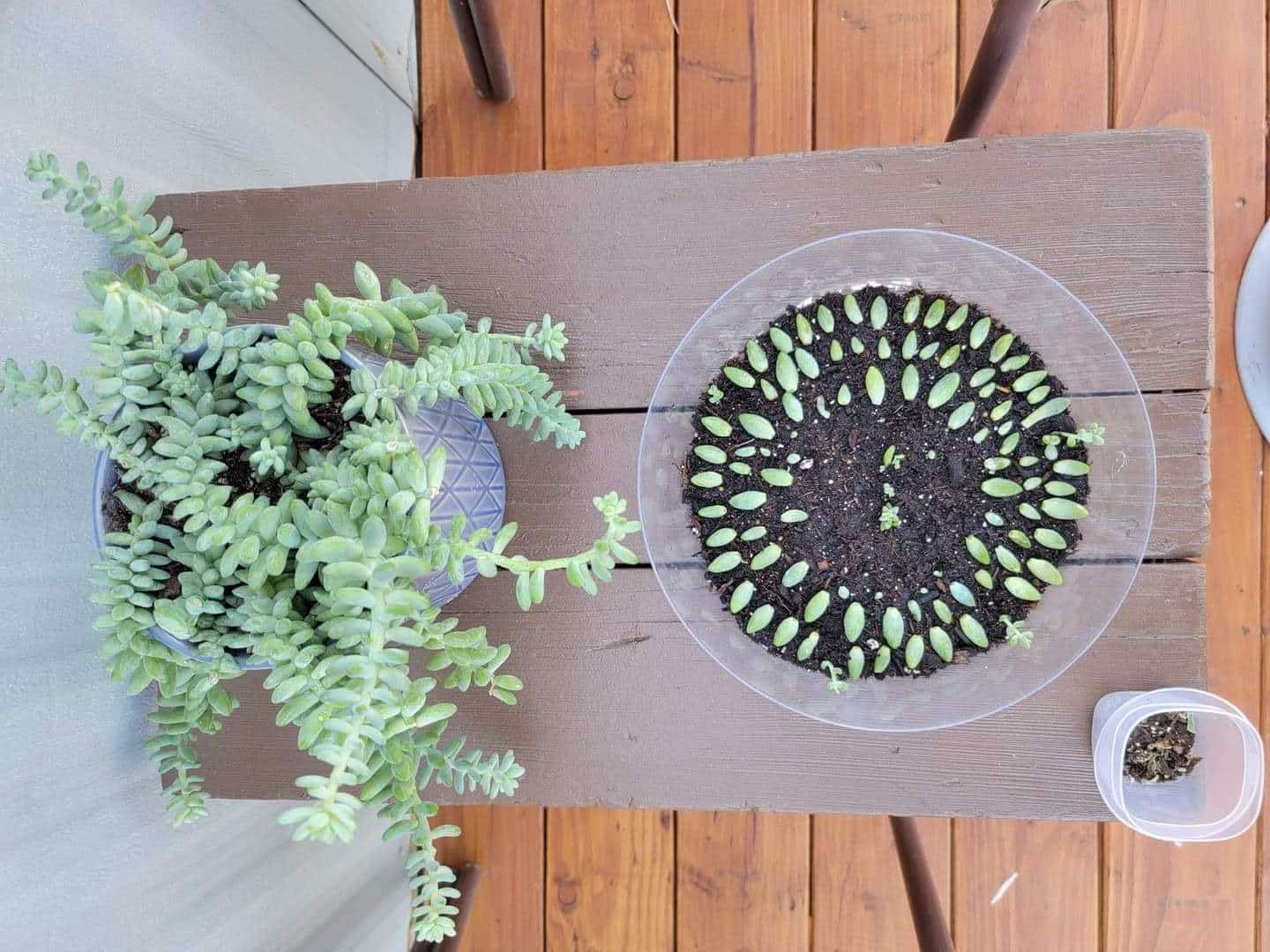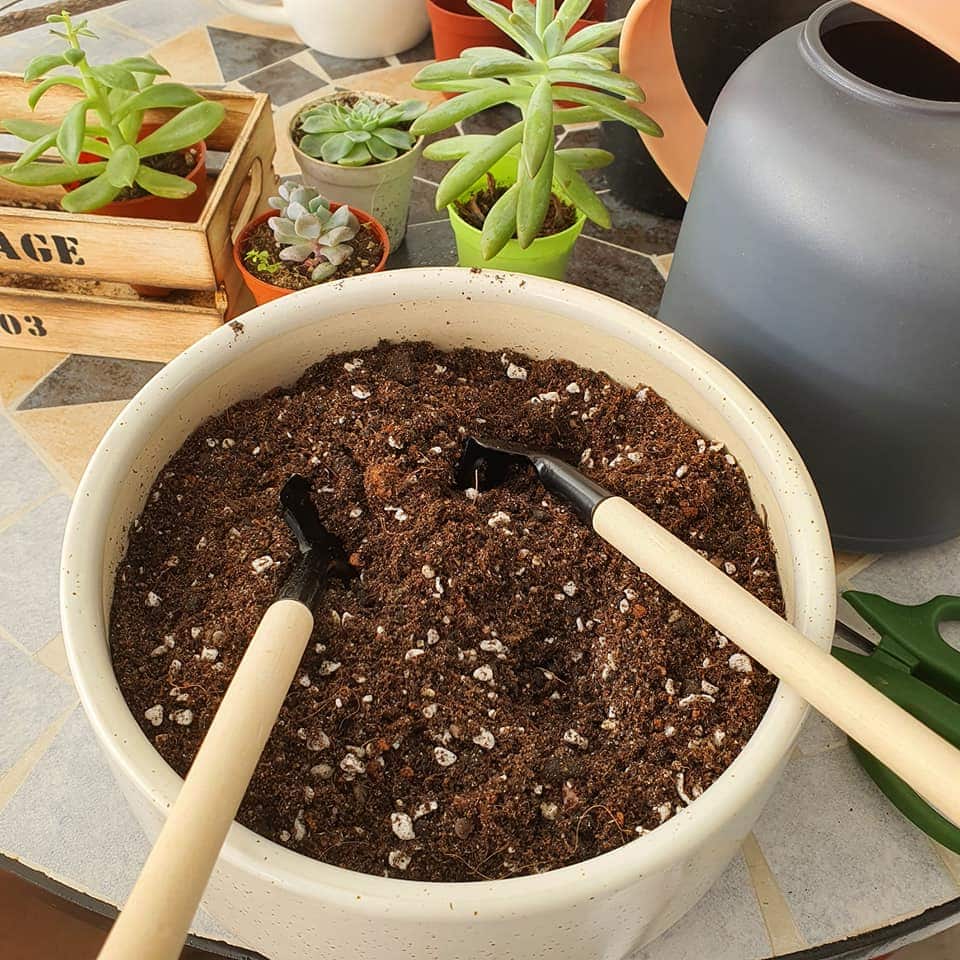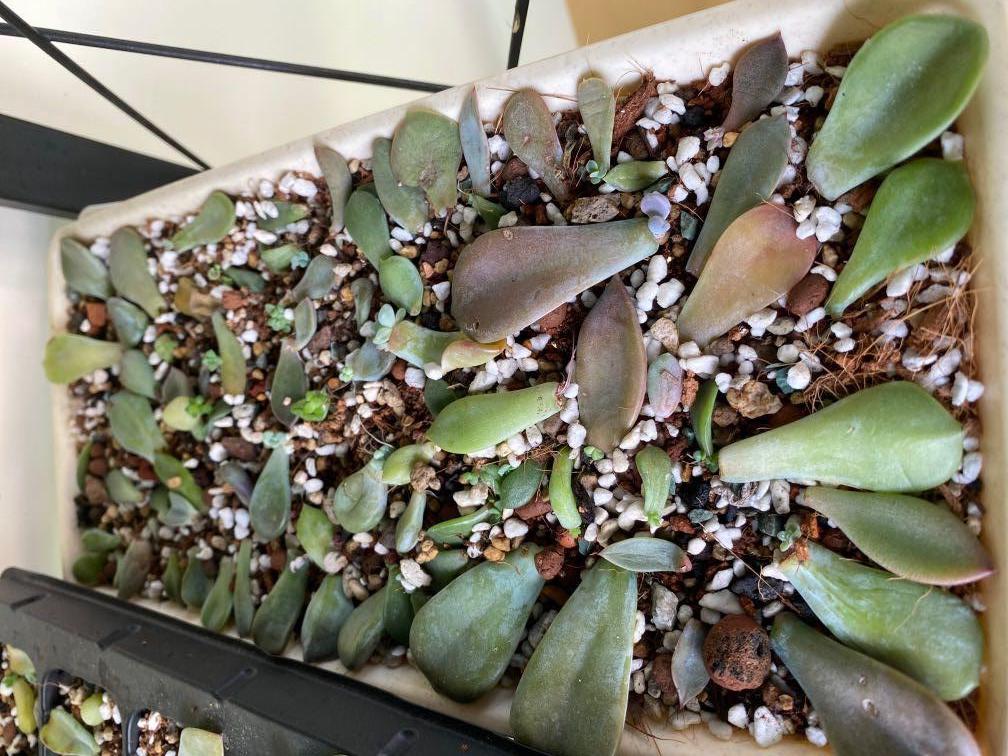Succulents certainly make our world better, and if you already have these chubby, beautiful, and resilient plants in your garden, yard, or indoors, you’ll want to add more. While you could buy more succulents, why not propagate them yourself?
These plants’ ability to reproduce and propagate lets you expand your succulent collection without buying new plants. However, succulent propagation isn’t always straightforward, and you may encounter problems in the process.
Knowing the common problems with succulent propagation will help you get ahead of them and avoid or fix them correctly. Let’s explore these issues and their solutions.
Common Problems With Succulent Propagation
1. Overwatering
Overwatering your succulents during propagation is a common and detrimental problem. While you should provide the right amount of moisture when propagating succulents from leaves or cuttings, be careful not to overwater them to avoid root rot.
Solution
Allow the cuttings or leaves to callus over for a day or two before planting them in well-draining soil. Water sparingly, only when the soil is completely dry, and use containers with holes for proper drainage.
Also, avoid watering immediately after propagating.
2. Insufficient Light
Your succulents, whether propagated or not, do not belong in dark areas. Succulents are naturally adapted to receive ample sunlight and have evolved to grow compact and sturdy in response to these conditions.
If you deprive your succulents of adequate light during propagation, they tend to stretch out or become elongated. This results in weak, leggy succulents that are less attractive and less likely to thrive.
Insufficient light can also lead to underdeveloped or weak root systems, making it challenging for the propagated succulent to establish itself and draw nutrients from the soil.
Furthermore, weak, elongated succulents are vulnerable to diseases and pests. Their compromised structure and weakened immune system make them easier targets for common succulent pests like mealybugs and aphids.
Solution
Place your propagating succulents in a location with bright, indirect sunlight. This might include a windowsill with sheer curtains or a spot where they receive filtered light. However, don’t place them in direct, scorching sunlight, especially when extremely hot.
Alternatively, use artificial grow lights if you’re propagating succulents in a place with inadequate natural light or indoors. Moreover, rotate your propagations every few days to ensure even growth and prevent succulents from leaning toward the light source.
Related Posts:
3. Using the Wrong Soil Mix
Successful propagation also depends on the right soil mix. Unfortunately, you can easily propagate your succulents with the wrong soil mix, especially if you are a beginner and don’t know what to use. For instance, using a soil mix that retains moisture can result in root rot and overwatering.
Also, soil that lacks proper aeration can suffocate the roots, leading to stunted growth and a weakened root system. Furthermore, succulents have specific nutrient requirements. Hence, using a soil mix with an inappropriate nutrient composition can result in nutrient deficiencies or excesses, affecting overall plant health.
Solution
i) Choose a Well-Draining Mix
Opt for a succulent and cacti soil mix. These mixes typically contain a combination of materials like potting soil, perlite, coarse sand, and pumice to ensure excellent drainage.
If you prefer to create your own mix, a standard ratio is two parts potting soil to one part perlite or coarse sand.
ii) Amend Existing Soil
If you have already planted your succulent cuttings or leaves in an unsuitable soil mix, it’s not too late to fix the issue. Gently remove the plants from the soil, shake off the excess soil, and replant them in a well-draining mix.
iii) Learn Species-Specific Needs
Different succulent species may have slightly varying soil requirements. Research your succulents’ needs before propagating to ensure you provide the right soil mix and care.
4. Choosing The Wrong Container
Perhaps you have some containers lying around at home and are considering putting them to good use- propagating your succulents. Do not do that unless you ensure they are suitable for succulent propagation. The pots must be shallow and have drainage holes.
Containers without drainage holes can make the soil waterlogged. On the other hand, small containers can hinder the growth of your succulent propagations.
The crowded conditions can lead to competition for nutrients and space, resulting in weak and stunted plants.
Containers that do not allow adequate airflow around the soil and roots can contribute to issues such as fungal growth and poor root development.
Solution
Select containers with holes at the bottom to promote proper drainage. Also, match the size of the container to the number of succulent cuttings or leaves you plan to propagate. This will make sure each cutting or leaf has sufficient growing space without being crowded by others.
The porous nature of terra cotta pots makes them excellent for succulent propagation. They help wick away excess moisture and give the soil good aeration. Additionally, the weight of terra cotta pots can help stabilize tall succulent plants.
While functionality is essential, ensure the containers are also aesthetically appealing.
5. Overcrowding
You risk overcrowding your succulents by planting too many cuttings or leaves too closely together in a single container. Crowded succulent propagations must compete for essential resources like sunlight and water. This competition can lead to uneven growth, weak plants, and limited access to vital resources.
Overcrowded conditions can also create a humid and poorly ventilated environment conducive to fungal diseases and pest infestations. Furthermore, crowded containers can limit air circulation, leading to stagnant, humid conditions detrimental to succulents.
Solution
Position each leaf or cutting evenly in the container, leaving enough room between each propagation for healthy development. Also, consider using larger or multiple containers if you have many succulent propagations.
Inspect your succulent containers and carefully remove excess propagations. If you desire, transplant them into different containers to give them more room to thrive.
6. Pests and Diseases
Among the many splendid reasons many people love succulents is their hardy nature. However, this doesn’t make them immune to pests and diseases. Therefore, when propagating succulents, watch out for common problems such as fungal infections, mealybugs, and aphids.
Solution
Inspect your propagations regularly for signs of pests or diseases. Act as soon as you spot issues to address them early. Isolate affected plants, remove pests by hand or with a gentle stream of water, and consider controlling infestations with natural remedies such as insecticidal soap.
7. High Humidity Levels
Considering that succulents are adapted to arid environments and thrive in low humidity conditions, high humidity can lead to issues like rot and mold during propagation. High humidity levels can also reduce the oxygen content in the soil and hinder root development, resulting in weaker plants.
Solution
Maintain a dry and well-ventilated environment for your propagating succulents. If you live in a particularly humid climate, consider using a fan to improve air circulation around your plants.
8. Neglecting Temperature Needs
Propagating succulents in extreme temperatures, whether too hot or too cold, presents some challenges. For example, it hinders the development of roots and new growth.
Solution
Keep your propagations in a temperature range that suits the specific succulent species you are propagating. Most succulents prefer temperatures between 60°F (15°C) and 80°F (27°C). Protect them from frost and avoid exposing them to scorching heat or freezing temperatures.
9. Choosing the Wrong Propagation Method
You can propagate succulents in different ways, like offsets, leaf cuttings, seeds, and stem cuttings. Choosing the wrong strategy for a particular succulent species can lead to poor results.
Solution
Research the propagation method that best suits your succulents. Some succulents are best propagated from leaves, while others thrive through stem cuttings or offsets. Understanding the suitable method for your succulent will greatly increase your chances of success.
10. Removing The Pups Prematurely
You will need to separate the pups at the right time to succeed in your succulent propagation. Removing them prematurely can lead to issues such as inadequate root development, increased vulnerability to stress, and a reduced success rate.
Solution
Give the pups time to grow to a reasonable size and have a few sets of leaves. Before separating a pup, gently inspect its base to see if it has developed roots. Look for small, white, or beige root structures.
After separating a pup, let the cut surface callus for 1-2 days before planting it in well-draining soil. This helps encourage the development of healthy roots and prevent rot.
You typically need to wait 4 to 5 weeks for the pups to grow to an appropriate size, develop roots, and be ready for separation. This helps boost the chances of achieving a successful propagation.
Handle pups with care, provide suitable growing conditions, and monitor their growth patiently to ensure they thrive and become healthy mature succulents.
Conclusion
A successful propagation is rewarding, but this is possible only if you propagate your succulents correctly. This involves overcoming common problems with succulent propagation. The solutions to these issues are above.
Also, understand that succulent propagation takes time, sometimes many weeks up to months. Therefore, be patient and resist the urge to disturb or check the progress of your propagations too frequently.

Hey there, fellow plant enthusiasts! I’m Rachel, the green-thumbed writer behind Rooted In Garden. With a deep-rooted love for all things botanical, I’ve made it my mission to help you cultivate a thriving collection of houseplants. As a devoted plant parent myself, I understand the joys and challenges that come with nurturing these leafy wonders. Whether you’re a succulent aficionado, an orchid enthusiast, or simply adore all potted flora, join me on this journey as we explore the secrets to growing and caring for our beloved green companions. Together, let’s create a flourishing oasis indoors.



